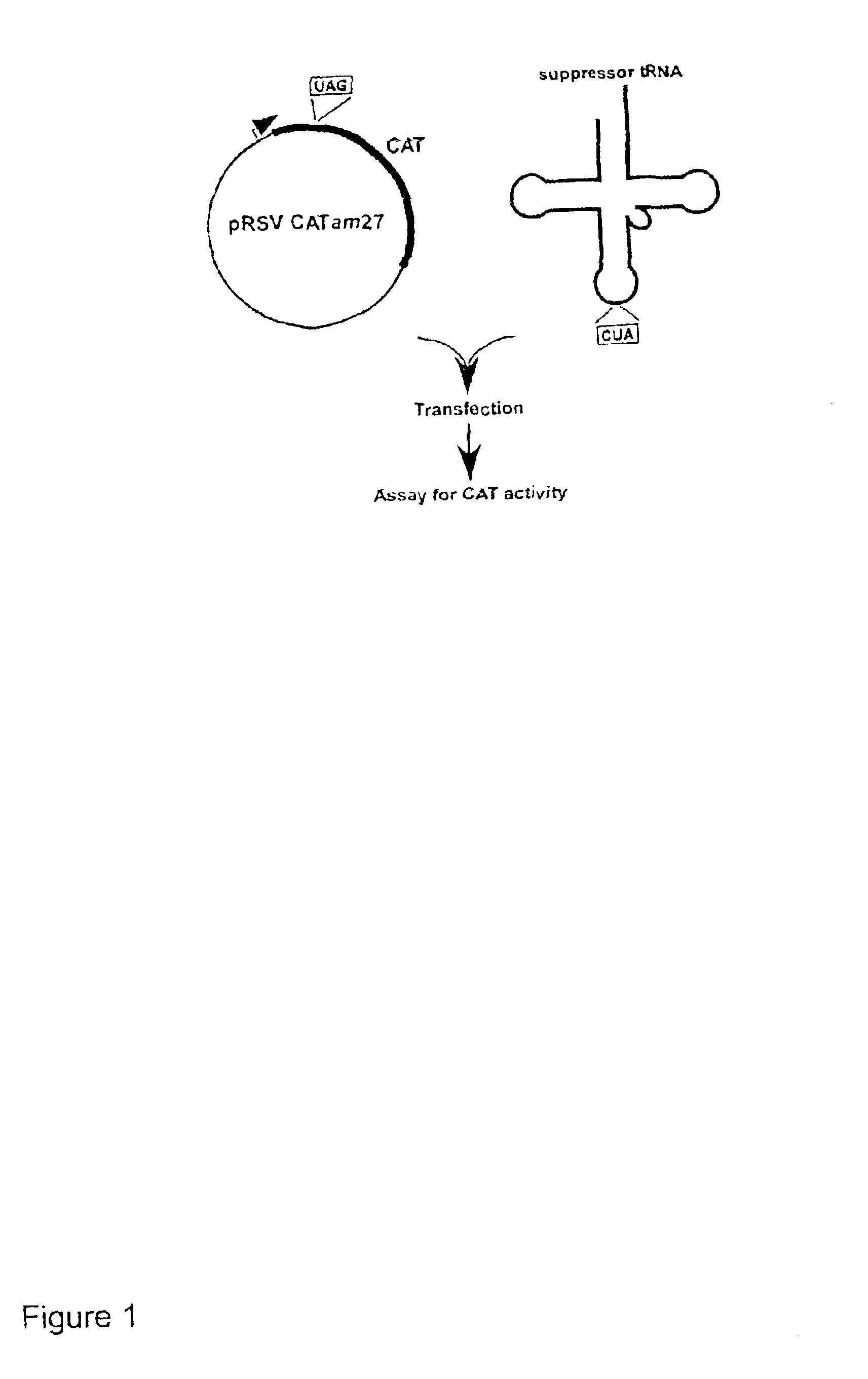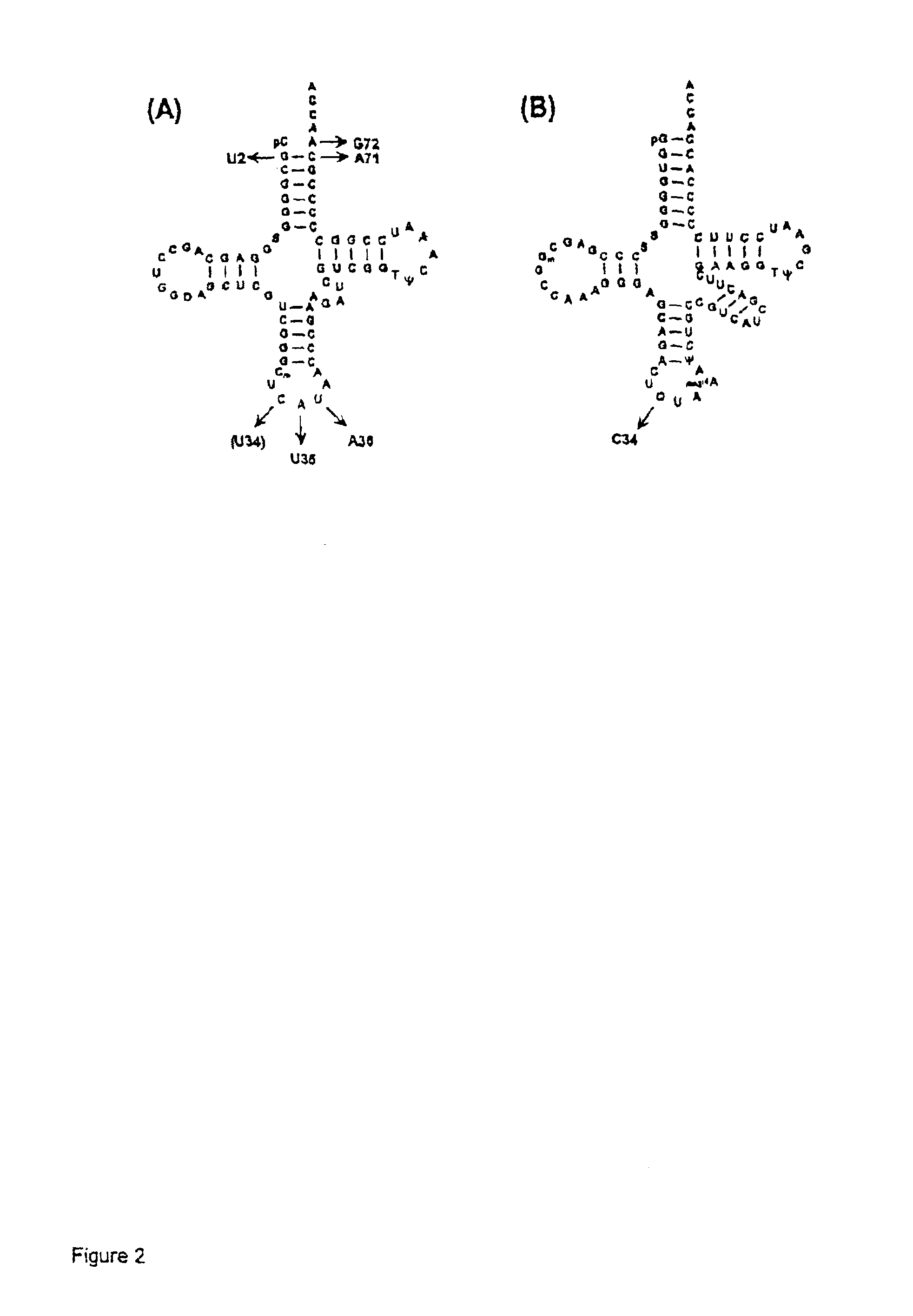Suppressor tRNA system
a technology of suppressor trna and trna, which is applied in the field of suppressor trna system, can solve the problems of low protein yield of most of the available techniques for introducing unnatural amino acids into proteins, and many techniques that cannot be utilized in vitro and/or rely on laborious synthetic technologies
- Summary
- Abstract
- Description
- Claims
- Application Information
AI Technical Summary
Benefits of technology
Problems solved by technology
Method used
Image
Examples
example 1
Import of Amber and Ochre Suppressor tRNAs into Mammalian Cells
Materials and Methods
[0032]GENERAL. Standard genetic techniques were used for cloning (Sambrook et al. Molecular Cloning: A Laboratory Manual, Cold Spring Harbor Press, Cold Spring Harbor, N.Y., Second Edition, 1989), E. coli strains DH5α (Hanahan J. Mol. Biol. 166:557, 1983) and XL1-Blue (Bullock et al., BioTechniques 5:376, 1987) were used for plasmid propagation and isolation. For transfection of mammalian cells, plasmid DNAs were purified using an EndoFree Plasmid Maxi kit (Qiagen). Oligonucleotides were from Genset Oligos and radiochemicals were from New England Nuclear.
[0033]PLASMIDS CARRYING REPORTER GENES. pRSVCAT and pRSVCATam27 and pRSVCAToc27, carrying amber and ochre mutations, respectively, at codon 27 of the chloramphenicol acetyltransferase (CAT) gene, have been described previously (Capone et al., Mol. Cell. Biol. 6:3059, 1986).
[0034]PLASMIDS CARRYING SUPPRESSOR TRNA GENES. The plasmid pRSVCAT / trnfM U2:A7...
PUM
 Login to View More
Login to View More Abstract
Description
Claims
Application Information
 Login to View More
Login to View More - R&D
- Intellectual Property
- Life Sciences
- Materials
- Tech Scout
- Unparalleled Data Quality
- Higher Quality Content
- 60% Fewer Hallucinations
Browse by: Latest US Patents, China's latest patents, Technical Efficacy Thesaurus, Application Domain, Technology Topic, Popular Technical Reports.
© 2025 PatSnap. All rights reserved.Legal|Privacy policy|Modern Slavery Act Transparency Statement|Sitemap|About US| Contact US: help@patsnap.com



